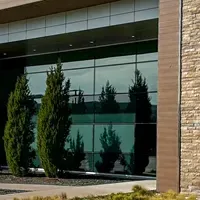
New Community Solar Power Plant Energizes Howard County and Beyond
New Community Solar Power Plant Energizes Howard County and Beyond
A Bright Future for Renewable Energy
The Baltimore-Washington area has taken a significant step towards a sustainable future with the inauguration of a new community solar power plant in Howard County, Maryland. On July 8, 2025, local officials, community members, and representatives from Chaberton Energy and Pivot Energy celebrated the official launch of the Lime Kiln solar project, which boasts a capacity of 3.2 megawatts (MWdc). This ambitious initiative is not only set to provide enough renewable energy to power up to 500 homes and businesses in the area but also contributes to reducing greenhouse gas emissions equivalent to taking 800 gasoline-powered cars off the road.
Community Benefits and Educational Support
One of the standout features of the Lime Kiln project is its commitment to community engagement and educational development. Chaberton Energy announced a generous $10,000 donation to the Bright Minds Foundation, which supports Howard County's public school system, to establish a STEM scholarship for graduating seniors. This initiative underlines the plant's multifaceted impact—contributing not just to energy independence but also to the educational aspirations of young people in the community.
Abigail Ross Hopper, President and CEO of the Solar Energy Industries Association, emphasized the importance of such projects in helping communities transition to cleaner energy alternatives. Howard County Executive Calvin Ball echoed this sentiment, stating that renewable energy sources like the Lime Kiln solar farm are pivotal in meeting Maryland's goal of achieving 100% renewable energy by the year 2035.
Solar Energy's Role in Economic Relief
As energy demands rise and electric bills continue to soar, community solar projects such as Lime Kiln offer an effective solution to ease financial burdens on residents. Subscribers to the community solar project can expect an approximate 10% discount on their electricity bills annually. Stefano Ratti, the founder and CEO of Chaberton Energy, highlighted that projects like Lime Kiln not only provide renewable energy generation but also contribute to economic stability for families facing rising energy costs.
The Agrivoltaics Initiative
Adaptability is at the heart of the Lime Kiln project, as it incorporates agrivoltaics—an innovative approach that combines solar energy generation with agricultural practices on the same land. The project will utilize a significant portion of its land for agricultural activities, including sheep grazing and native pollinator planting. Local flora will include essential plants such as milkweed (a favorite for Monarch butterflies) and black-eyed Susans, which serve as Maryland's state flower. These native plants will attract various insects, butterflies, and birds, thereby supporting the local ecosystem and ensuring the long-term productivity of the land.
Richard Gilker, Senior Vice President of Technical Operations for Pivot Energy, noted that by integrating agricultural practices with solar power generation, the project will create sustainable benefits for the entire Howard County community.
A Look Ahead
The Lime Kiln project represents just one facet of Chaberton Energy's larger vision. With over 200 MWdc of community solar projects already in various stages across Maryland, the company is well on its way to making a significant impact on the renewable energy landscape. The collaboration with Pivot Energy, which has also partnered on approximately 40 MWac of solar projects nationwide, serves as a testament to the importance of synergies in the renewable sector.
In addition to Lime Kiln, another joint project, known as Project Greyrock, is set to energize shortly in Wicomico County, further expanding access to renewable energy in the region.
Conclusion
The inauguration of the Lime Kiln community solar project is a momentous occasion for Howard County, symbolizing not only progress in renewable energy generation but also a commitment to educational support and biodiversity. As communities look to the future, initiatives like this pave the way for a sustainable, economically viable, and environmentally responsible landscape in Maryland and beyond.
Topics Energy)










【About Using Articles】
You can freely use the title and article content by linking to the page where the article is posted.
※ Images cannot be used.
【About Links】
Links are free to use.